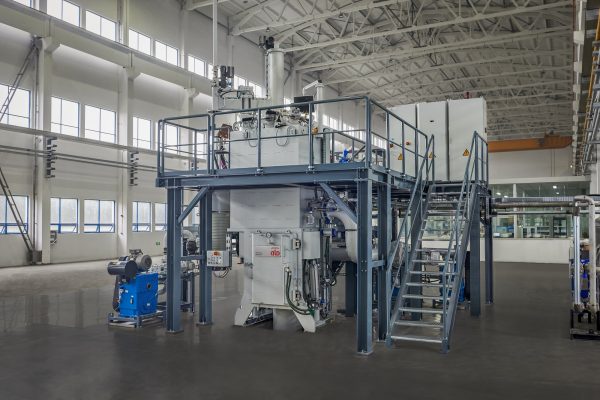What is the Vacuum Investment Casting Process?
Vacuum investment casting yields extremely high quality metal parts with fine detail and excellent surface finish. It’s also more complex than conventional investment casting and requires sophisticated melting and mold-filling equipment. As a result, it’s reserved for casting parts that need very high levels of structural integrity and where defects are expensive.
Why Use Vacuum?
Liquid metal tends to “churn” as it flows into a mold. This turbulence leads to two types of defects: oxides and porosity.
Oxides are formed when metal atoms bond with oxygen. This takes place at the metal-air where it forms an oxide layer. On some metals, such as aluminum, surface oxidation is beneficial because it creates a corrosion-resistant layer. However, it’s a problem during casting.
This is because, as the liquid metal churns, oxides form on the surface and get incorporated into the body of the cast part. Once the metal solidifies these discontinuities form areas of weakness.
Porosity is the formation of bubbles within the body of the metal. Like oxides, these reduce strength, especially in high stress areas when exposed by machining.
One way to minimize turbulence, oxidation and porosity is to fill slowly from the bottom of the mold. Most casting companies try to do this but part design and cycle time constraints often limit what’s possible. Another method is to extract air from the mold before the metal flows in.
The Vacuum Investment Casting Process
Investment casting is used to create complex metal parts that need little secondary machining. The mold is formed by coating a wax pattern with a ceramic slurry. After the slurry has dried to a hard shell the wax is melted out to leave a cavity for the metal to fill.
In vacuum investment casting, the mold is made the same way but then air is pumped out of the mold cavity, before it’s filled with metal. Since the objective is to prevent the liquid metal from oxidizing, during melting and pouring they are both done under vacuum. This takes place in a vacuum induction melting machine (VIM).

In one VIM configuration, the machine consists of two chambers arranged vertically. Another VIM configuration contains an efficient horizontal three-chamber vacuum induction system. The vertical two-chamber configuration has an upper chamber and lower chamber which are under vacuum. The ceramic investment casting shell is placed into the lower chamber then pumped down to a low micron level. Next, an isolation valve is opened and the mold is raised into a position, close to the melt crucible, for pouring. Once full, with metal, the shell is removed from the mold vacuum chamber. When solidification is complete, the ceramic is broken away to reveal the cast parts. The horizontal three-chamber VIM system has isolation valves which allow for vacuum level consistency between chambers. Efficiency is increased by crucible ramming and melting integral to the casting cycle providing for more melts/more pounds poured per hour while maintaining high vacuum levels and superior casting quality.
In a variation of this process the crucible chamber may be pressurized. (Using an inert gas avoids oxidation.) The pressure increases mold filling speed and helps ensure every part of the mold cavity is filled.
Benefits of Vacuum Investment Casting
The primary advantage of this process is the near total elimination of oxidation and porosity defects and flaws within the cast part. (Only “near” because it’s impossible to extract every molecule of oxygen from the mold.) Furthermore, it prevents non-fills caused by air pockets.
Other benefits are that the process can form very fine features and exceptionally thin-walled sections because the vacuum ensures the cavity is completely filled. In addition, surface quality is excellent.
Metals for Vacuum Investment Casting
Any metal suitable for investment casting can be processed under vacuum. However, the process is most often used with nickel, cobalt-based superalloys and titanium alloys as these metals have exceptionally high affinity for oxygen and form oxides readily. In addition, the high value of these metals and their use in complex, high-value products makes it beneficial to minimize scrap.
Should You Use Vacuum Investment Casting?
Drawing a vacuum on mold tools before metal is poured prevents air from creating defects within the body of a casting. Combined with investment casting, this technique enables production of high quality parts suitable for high-load and high-stress applications. Process economics make vacuum investment casting especially attractive for high-value metals like nickel, cobalt-based superalloys, and titanium alloys.
Impro casting specialists can help you decide if vacuum investment casting would be right for the parts you make. Contact us to start that discussion.